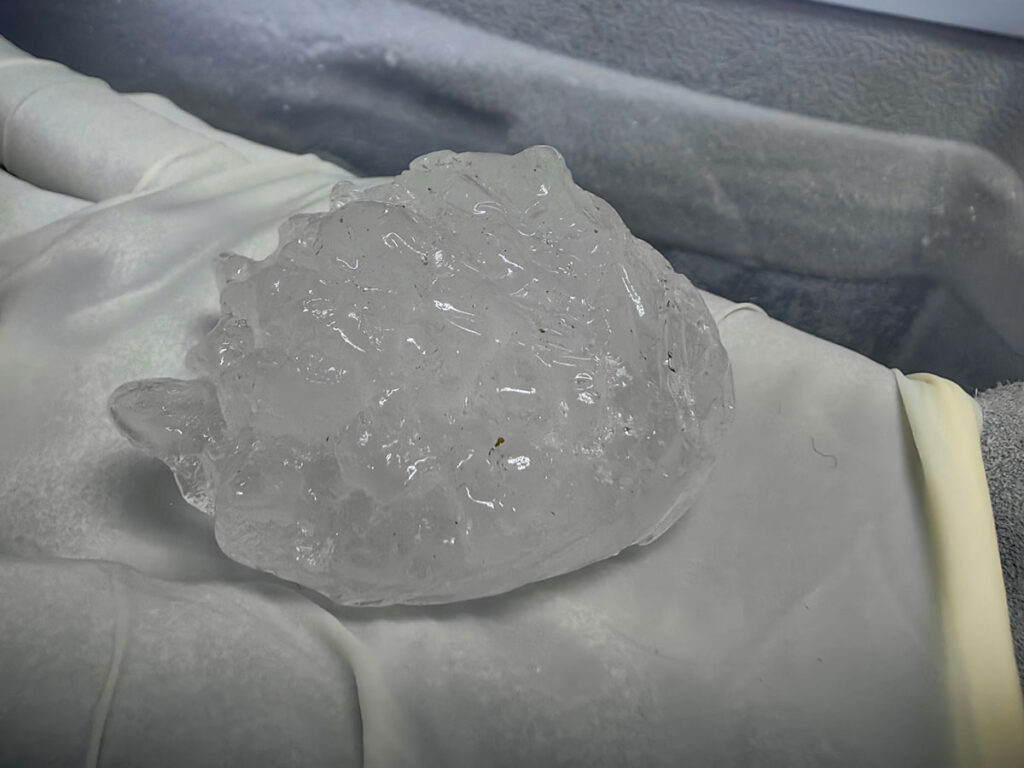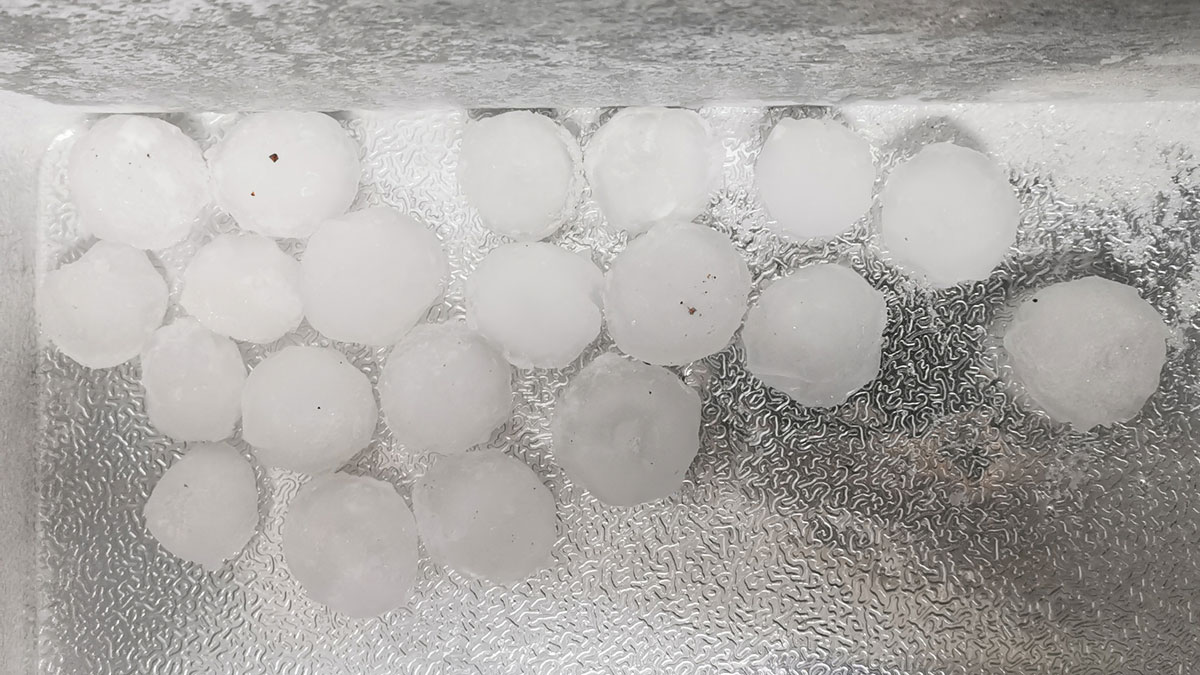The textbook explanation of how hailstones grow goes something like this: Nuclei collect frozen layers as they are repeatedly lofted up and fall through clouds. But scientists have had hints that this up-down cycle doesn’t always reflect real hailstones’ journeys. Now researchers have revived an old technique to track dozens of hailstones. The new results, published in Advances in Atmospheric Sciences, suggest that many hailstones take simpler paths.
The idea that hailstones grow as they repeatedly rise and fall on repeat arose as a way to explain stones’ alternating layers of different transparencies, said Xiangyu Lin, an atmospheric scientist at Peking University in Beijing and an author on the new study. But scientists don’t have any direct observations of individual hailstones’ paths in clouds because the severe storms that produce hail are difficult, even dangerous, to observe.
“The vast majority of our understanding of how hail grows has come from numerical modeling,” said Matthew Kumjian, an atmospheric scientist at Pennsylvania State University who wasn’t part of the study. The new research is “a nice piece of experimental evidence” to validate those models, he said.
“Over the past 8 years, we have collected more than 3,000 hailstones.”
At a seminar at Peking University in 2018, Kumjian showed a simple arcing trajectory—rather than a yo-yoing one—for simulated hailstones. Seeing those results, one of Lin’s colleagues at Peking University, atmospheric scientist Qinghong Zhang, wondered whether she could find real hailstones that followed a similar path. That year she started collecting hailstones, using social media to ask the public to save the icy orbs. “Over the past 8 years, we have collected more than 3,000 hailstones,” she said.
To trace the hailstones’ trajectories, the team turned to stable isotopes. At lower altitude, the ice that forms on hailstones tends to have a greater concentration of heavier isotopes of hydrogen and oxygen than the ice that forms higher up. Researchers can measure the ratio of heavy and light isotopes in a layer, providing a postmark of sorts for the altitude at which the ice originated.
The scientists analyzed 27 hailstones from nine different storms spread across eastern China. They sliced each stone in half to reveal its layers. Then they cut the hailstones down layer by layer, so they could melt each layer and measure its isotopes. To find the link between isotope concentrations and height in a storm cloud, the team used temperature, humidity, and pressure data from weather balloons that floated through the atmosphere near each storm.
Hailing from Where?
The isotopes showed that of the hailstones they analyzed, only one had more than one upward flight segment. A few hailstones grew at a relatively constant altitude, and 16 either rose or fell steadily as they grew.
Eight hailstones ascended once before falling to the ground. These eight hailstones were significantly larger than the other stones, Lin said. Hailstones primarily grew between −10°C and −30°C, the team found. With their up-and-down path, these eight stones seem to have spent more time in that zone, causing them to grow larger than others.

Scientists used stable isotope analysis on hailstones some 50 years ago, but the technique fell out of favor, Kumjian said. Many of those early studies analyzed a small number of stones from few storms or sometimes a single storm. The new study is “bringing back this old type of analysis with modern methods,” he said.
But the analysis required assumptions that might cloud results. For instance, updrafts can mix air from different altitudes, Kumjian said. That can affect the isotopes in a hailstone’s layers.
Scientists are still exploring questions about hail across a range of scales from stone to storm. Though researchers know what sorts of storms can produce damaging hail, it’s hard to predict which will rain down baseball-sized stones or where exactly hail will fall. Meanwhile, the physics of hailstones’ growth is tricky. Researchers typically model stones as perfect spheres—a far cry from the bumpy lumps that fall from the sky. But those shapes affect how fast hail falls and the damage it can produce, Kumjian said.
“It’s a very exciting time in the hail world. We’re going to learn a lot in the coming years.”
Researchers are using modeling, radar observations, and isotope studies such as this one to improve forecasts. Hail can knock out crops, damage structures, and shatter solar panels. Even 10 minutes of warning is enough for people to move cars and prevent damage, Zhang said.
Kumjian is part of a team that is launching instrumented Styrofoam spheres into clouds that could provide insights on actual paths taken by stones. Zhang’s team is continuing to study isotopes in layers, now looking at larger stones that formed in storms over Italy. “It’s a very exciting time in the hail world,” Kumjian said. “We’re going to learn a lot in the coming years.”
—Carolyn Wilke (@CarolynMWilke), Science Writer

